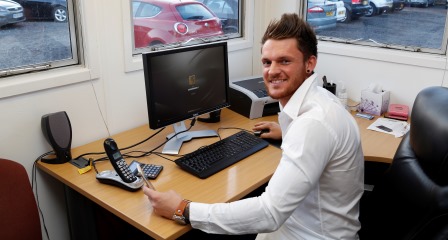150 Cars, Syston

We met up with salesman Nathan Smith of 150 cars to find out exactly how introducing superfast broadband has affected his business:
Who are 150 cars?
We buy and sell mainly second hand cars at an industrial estate tucked away on the outskirts of
Leicester close to the village of Syston. We generate business nationwide and provide a warrantee alongside customer support meaning that broadband is a key component in driving our business forward.
What problems were you experiencing?
As the business site is in rural Leicestershire the broadband speeds would usually range between 1-2 Mbps which meant really slow uploading and long unnecessary periods of time spent updating the company website. We decided to upgrade to help improve our online presence.
What immediate improvements are you seeing?
With the faster speed from fibre broadband we have been able to utilise social media for advertising. photos can be easily added to our Facebook and Instagram accounts and our Twitter account has seen a positive response now we are able to upload images more frequently.
In terms of our own website we have been able to manage it more effectively by providing more
regular updates and responding quicker to queries. The increase in speed has also allowed us to send larger files by email effortlessly. Now that uploading has become easier we are using it to our advantage by developing a more established online presence.
What else has Superfast Broadband allowed you to do?
Since upgrading we have been engaging with our customers more often through social media which has
been reflected in business sales. We have also been exploring other technologies that rely heavily on fast
internet speeds such as Skype and Face Time.
Using these online tools has allowed us to offer clients to view the cars via video before they commit to a
purchase. Offering this service using our superfast fibre broadband has given our customers more choice and flexibility which has ultimately improved our trade.
